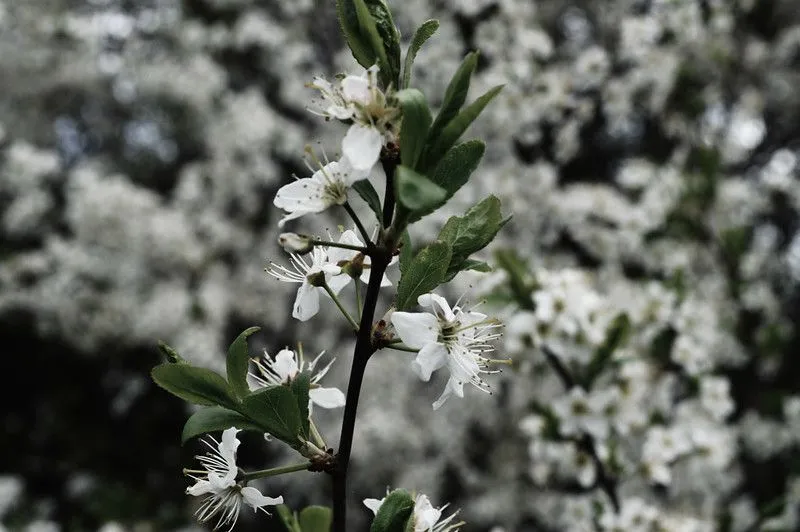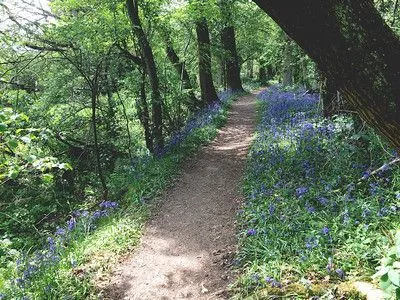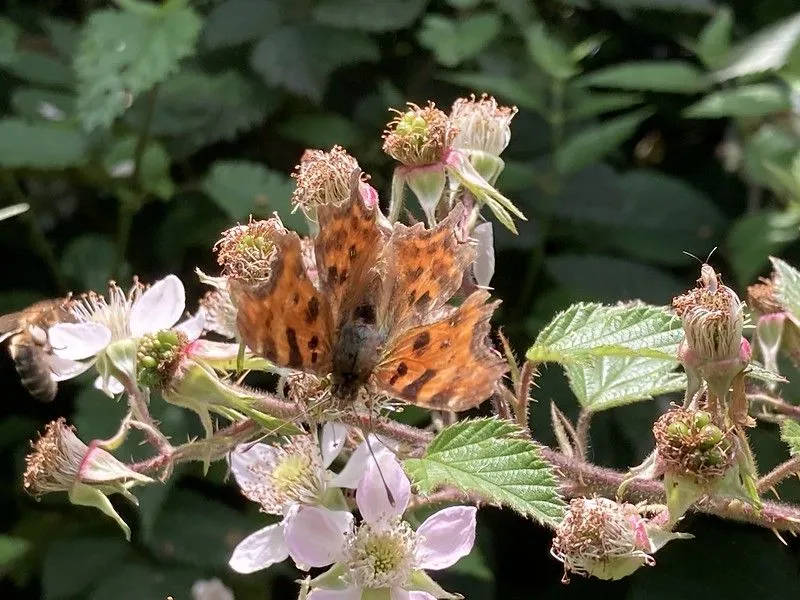FOR ALL AGES
April offers an embarrassment of riches for discovering the wildlife on your doorstep. Most of the trees will start blossoming or blooming. Wildflowers spring up in abundance. Birds are singing their finest songs and busy preparing or servicing their nests. Daffodils are EVERYWHERE. So much to see!
To distill things down, we’ve put together a list of sights that just about any family should be able to track down. You won’t find exotic plants and creatures on this list - just joyous natural wonders that should be visible in any local park or woodland in April.
An obvious one to start! Even the most uninterested, phone-gazing dullard can’t help but be startled by the sight of a full-blooming cherry tree. It is one of nature’s great beauties, and so commonly found along the streets of our towns. The early bloomers come out in late March, with the streets awash in pink and white through April. Look out for the many different varieties, as well as other fruit trees such as apple, pear and plum.

In winter, this common shrub-tree can look quite menacing, with its fearsome spikes. Come spring, it’s a different story, as the blackthorn gets covered in so much white blossom that you could be forgiven for thinking it had snowed. You’ll find the blackthorn growing in just about any decent suburban hedgerow. Don’t let the kids get too friendly, though. Those spikes can easily scratch and are well known for causing infection.

Another springtime favourite, the bluebell is an easy plant to spot in any scrap of woodland. Head to the more sheltered woods, though, and you can readily find whole carpets of the purple-blue flowers. If you’re in the UK, then you’re lucky enough to live in the country with the most bluebells in the world.
A slightly more challenging spring flower to find (though still relatively easy) is this attractive plant. Look for bursts of white in woodlands during mid to late April. Wood sorrel is easily distinguished by its heart-shaped lives, arranged in a trio around a pink-white flower. If you’re sure of the ID, then you can even take a nibble on the plant. Its leaves have a distinctive citrus burst, and are sometimes added to salad. (Note: Only do this with older children who will understand that some wild plants can be poisonous if not correctly identified.)

Many trees come into bud during April, but none more impressively than the horse chestnut. Large, sticky, green and brown buds give way to hairy leaves in a process that looks like something from an Alien film. The tree is usually celebrated for its autumn conkers, but this spring display, the ensuing bunch of drooping leaves, and the flower ‘candles’ of summer are just as impressive aspects of this magnificent tree.

The fox has now firmly established itself in urban centres and suburbs, attracted by all the scrap food we throw away. Most of us will see them from time to time, or at least hear their maudlin night calls. April is the busiest month for foxes. They tend to have cubs in March, so the parents work hard to find food for the extra mouths. You’re most likely to see foxes prowling at night, but daytime sightings are not unknown - such as this fellow I spotted on a London railway platform.
You’re very unlikely to ever see a live mole. The shy creatures spend all of their lives underground. However, we’ve all seen their calling card: the mole hill. The telltale mounds increase rapidly in April. It has nothing to do with moles coming out of hibernation (they remain active in winter). Rather, the warmer conditions bring earthworms to the surface, which in turn attracts the moles closer to ground level. Look for the hillocks in any large park, garden or sports field.
Take a good look in your local pond. Chances are, it’ll be teeming with tadpoles in April. Different species emerge at slightly different times, and the great unleashing also depends on weather conditions. But April is the most likely time.

It can be tricky to tell some butterflies apart. Most of the common species share similar shades of brown and orange. You have to wait for the insect to land in order to check its ID. Not so the brimstone. This lurid yellow-green beauty is one of the first butterflies of spring, and the easiest to spot. The small tortoiseshell is another attractive butterfly on the wing this month. It’s also easy to identify - an orange-red body with black and yellow bars along the leading edge of the wings. Look out, too, for the comma butterfly (pictured above) with its almost frilly orange wings. They have small, white c-shaped markings underneath the wings, hence the name ‘comma’.
Swallows and cuckoos are the birds traditionally associated with spring If you can spot one of these migratory species, then well done you! (Swallows become common later in the spring, but an April sighting is less likely.) A much, much easier spot - and just as rewarding - is the great tit. The birds are very common, and can be found in most parks, hedgerows and many gardens. The reason I single them out is their very distinctive two-note call, which some describe as ‘tee-cher, tee-cher’. Have a listen online, then head out to the park and I guarantee you’ll hear one within five minutes. The birds are most vocal in April and also easy to spot, thanks to the still-thin foliage. Besides the call, you can distinguish them at distance from the similar blue tit by the black cap on top of their heads. The perfect mission for a young would-be birdwatcher!
Birds sing with the dawn at all times of the year, but April is perhaps the best month to catch this aural wonder. Many songbirds are at their most vocal right now. Given that April also has a relatively late sunrise (roughly 6am at UK latitudes) compared with summer, it’s worth setting the alarm to catch it.
22 Fresh family ideas for spring
How to see wildlife without leaving your home
Wetland Wanders: 5 amazing wildlife spots in London
Read The Disclaimer
At Kidadl we pride ourselves on offering families original ideas to make the most of time spent together at home or out and about, wherever you are in the world. We strive to recommend the very best things that are suggested by our community and are things we would do ourselves - our aim is to be the trusted friend to parents.
We try our very best, but cannot guarantee perfection. We will always aim to give you accurate information at the date of publication - however, information does change, so it’s important you do your own research, double-check and make the decision that is right for your family.
Kidadl provides inspiration to entertain and educate your children. We recognise that not all activities and ideas are appropriate and suitable for all children and families or in all circumstances. Our recommended activities are based on age but these are a guide. We recommend that these ideas are used as inspiration, that ideas are undertaken with appropriate adult supervision, and that each adult uses their own discretion and knowledge of their children to consider the safety and suitability.
Kidadl cannot accept liability for the execution of these ideas, and parental supervision is advised at all times, as safety is paramount. Anyone using the information provided by Kidadl does so at their own risk and we can not accept liability if things go wrong.
Kidadl is independent and to make our service free to you the reader we are supported by advertising.
We hope you love our recommendations for products and services! What we suggest is selected independently by the Kidadl team. If you purchase using the buy now button we may earn a small commission. This does not influence our choices. Please note: prices are correct and items are available at the time the article was published.
Kidadl has a number of affiliate partners that we work with including Amazon. Please note that Kidadl is a participant in the Amazon Services LLC Associates Program, an affiliate advertising program designed to provide a means for sites to earn advertising fees by advertising and linking to amazon.
We also link to other websites, but are not responsible for their content.
Was this article helpful?



Browse Category



We’ll send you tons of inspiration to help you find a hidden gem in your local area or plan a big day out.



Check your inbox for your latest news from us. You have subscribed to:
Remember that you can always manage your preferences or unsubscribe through the link at the foot of each newsletter.